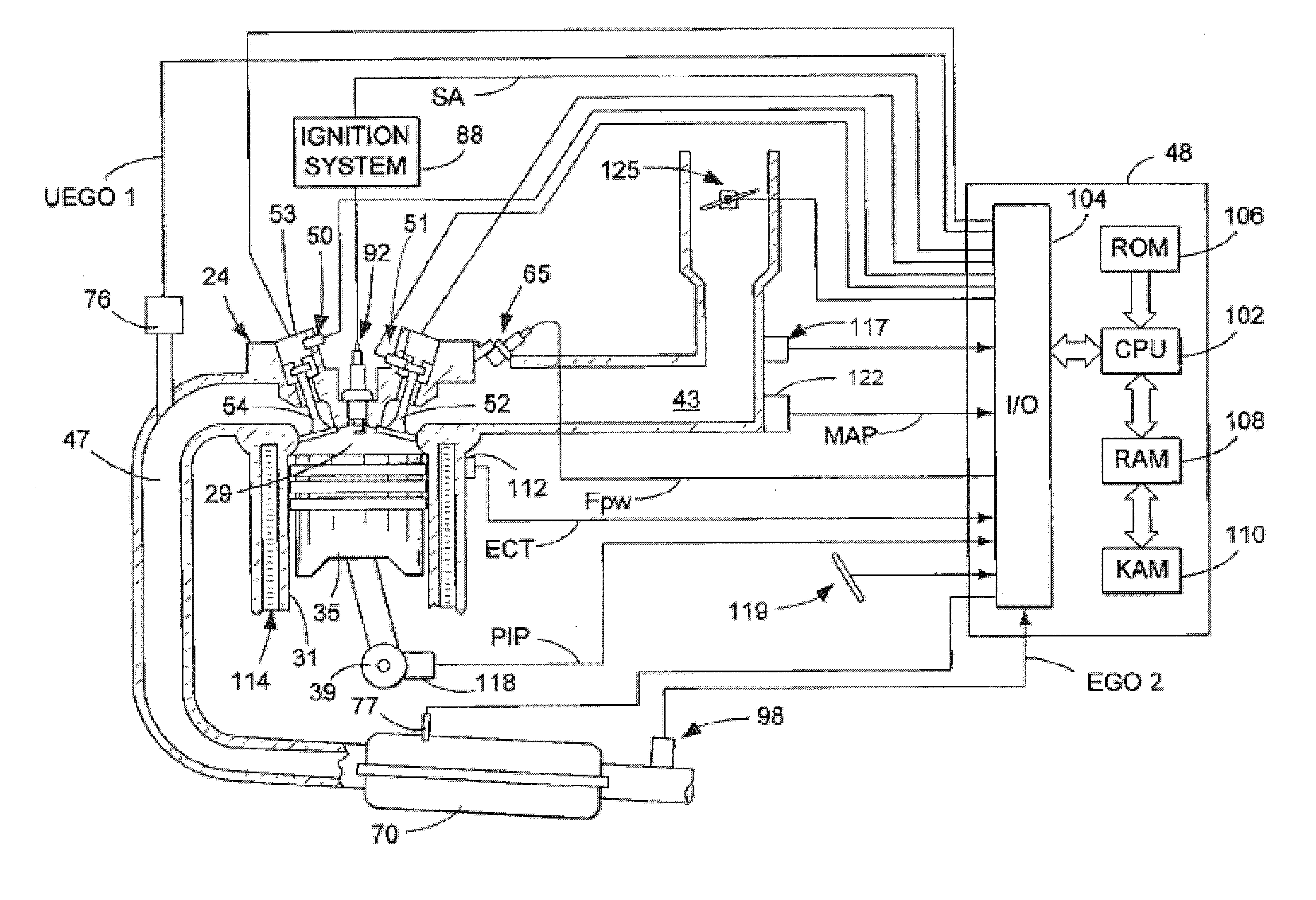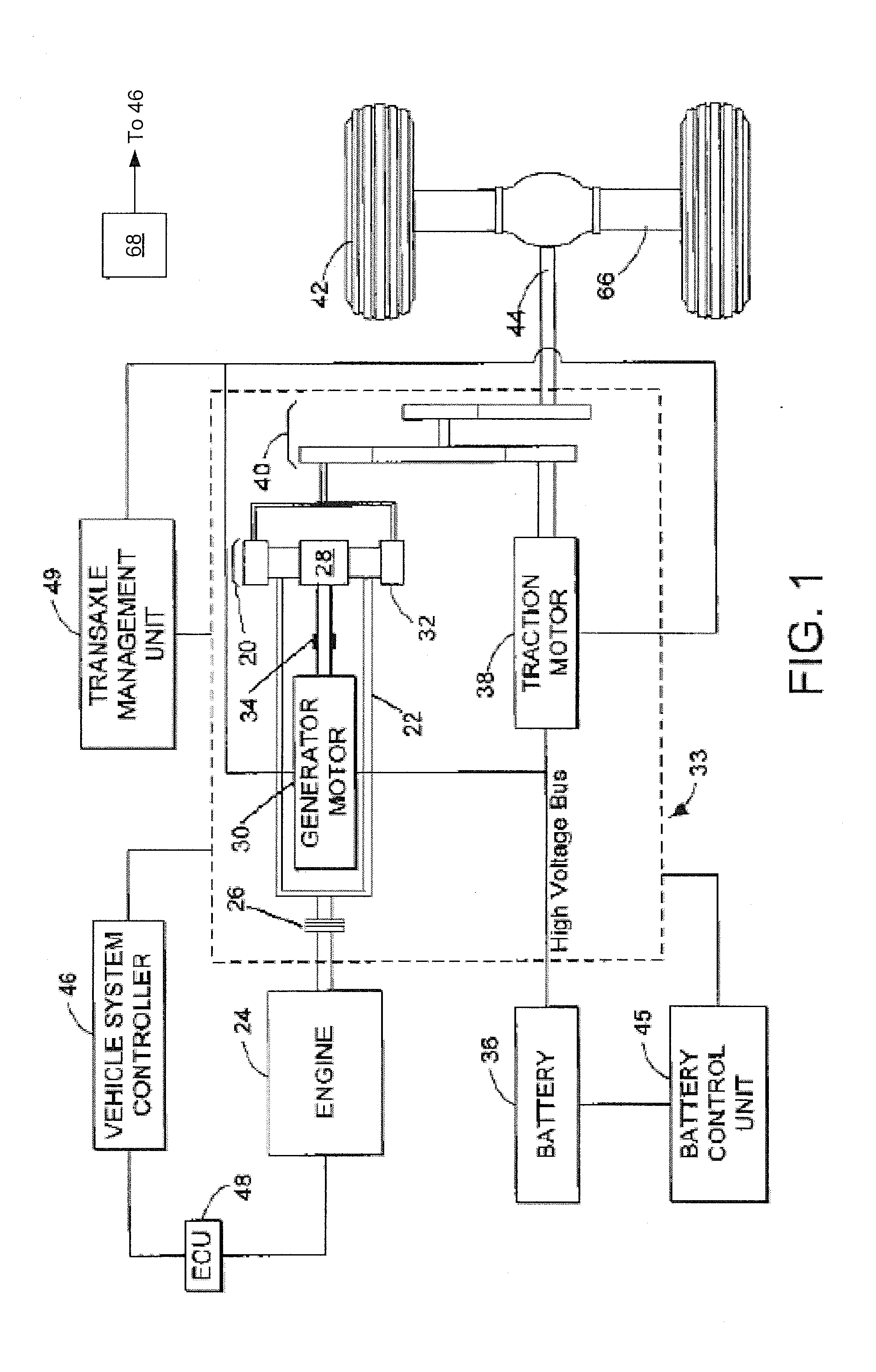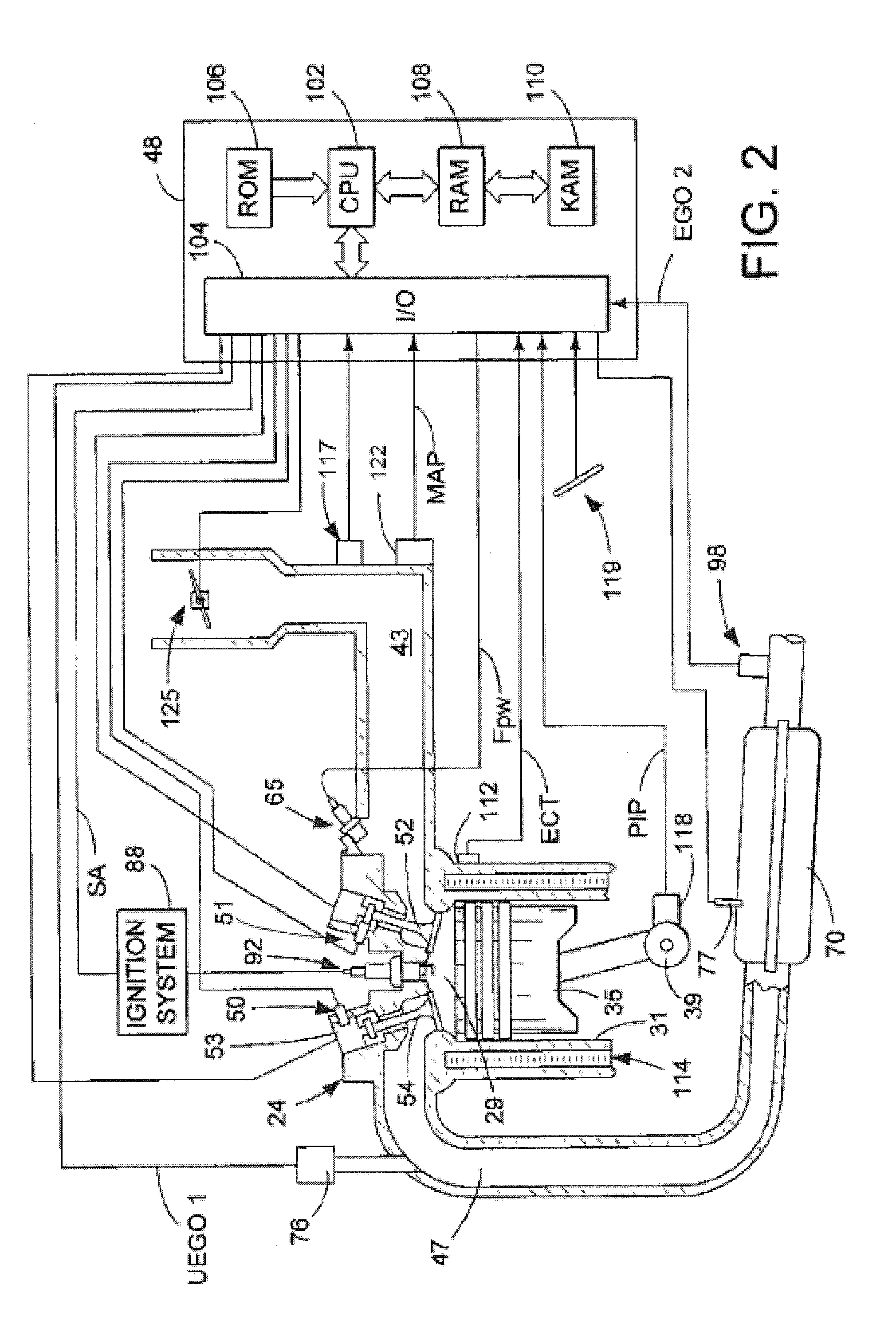Dynamic allocation of drive torque
- Summary
- Abstract
- Description
- Claims
- Application Information
AI Technical Summary
Benefits of technology
Problems solved by technology
Method used
Image
Examples
Embodiment Construction
[0016]Methods and systems are provided for dynamically adjusting a maximum engine torque available in a hybrid electric vehicle, such as the vehicle system of FIGS. 1-2. Based on whether an operator has selected a performance mode or an economy mode of vehicle operation, and further based on steady-state or transient conditions (FIG. 5), a limiting of the maximum engine torque may be varied. A controller may be configured to perform a control routine, such as the routine of FIG. 3 to apply a more constrained maximum torque more when operating in an economy mode or in the presence of steady-state conditions when operating in a performance mode to achieve higher fuel economy. In comparison, the controller may apply a less constrained maximum torque in the presence of transients when operating in the performance mode to achieve improved vehicle acceleration. The controller may also perform a routine, such as the example routine of FIG. 4, to learn the value of the more constrained maxi...
PUM
 Login to View More
Login to View More Abstract
Description
Claims
Application Information
 Login to View More
Login to View More - R&D
- Intellectual Property
- Life Sciences
- Materials
- Tech Scout
- Unparalleled Data Quality
- Higher Quality Content
- 60% Fewer Hallucinations
Browse by: Latest US Patents, China's latest patents, Technical Efficacy Thesaurus, Application Domain, Technology Topic, Popular Technical Reports.
© 2025 PatSnap. All rights reserved.Legal|Privacy policy|Modern Slavery Act Transparency Statement|Sitemap|About US| Contact US: help@patsnap.com



